When it comes to the 2022 Jeep Wagoneer and its more luxurious variant, the Grand Wagoneer, it’s hard not to ask: What on Earth took so long? Be it from Jeep, Ram or even Dodge, it’s perplexing that Chrysler (or whatever corporate entity it’s been known as) hadn’t already ginned up a full-size SUV answer to the Chevy Tahoes and Ford Expeditions of this world. It’s not like it didn’t have an exceptional truck upon which to base such a thing. Still, better late than never, and it must be said that the Wagoneer makes a suitably grand entrance to the big SUV party.
Like its GM and Ford competitors, the Jeep Wagoneer shares its underpinnings with a half-ton truck (the Ram 1500). However, it’s basically impossible to see that DNA thanks to differing brands and proportions that veer far away from the full-size SUV norm. Make no mistake, though, it definitely satisfies that full-size SUV norm … and then some. The Wagoneer is massive, measuring about 4 inches longer than the Tahoe/Yukon/Escalade and Expedition/Navigator (though well short of their respective extended models). The interior is similarly enormous. It’s also beautiful, with the Wagoneer blowing away its Chevy/GMC and Ford competitors particularly in terms of design and quality. The Grand Wagoneer, meanwhile, is “grand” in terms of increased opulence rather than size, and unquestionably rises to the challenge of competing with the Cadillac Escalade and Lincoln Navigator.
In short, the Jeep Wagoneer could easily be a slam-dunk choice, but there’s a serious problem: fuel economy. While no full-size SUV is an eco warrior, the Jeep is significantly less efficient than its competitors. The actual MPG figures may not seem that different, but in terms of actual gas burnt, it is. You’ll end up spending many hundreds or even thousands of dollars more per year by going with one of the Wagoneers. A 4xe plug-in hybrid or even just an EcoDiesel option can’t come soon enough.
Interior & Technology | Passenger & Cargo Space | Performance & Fuel Economy
What it’s like to drive | Pricing & Features | Crash Ratings & Safety Features
What’s new for 2022?
The Jeep Wagoneer is an all-new model for 2022.
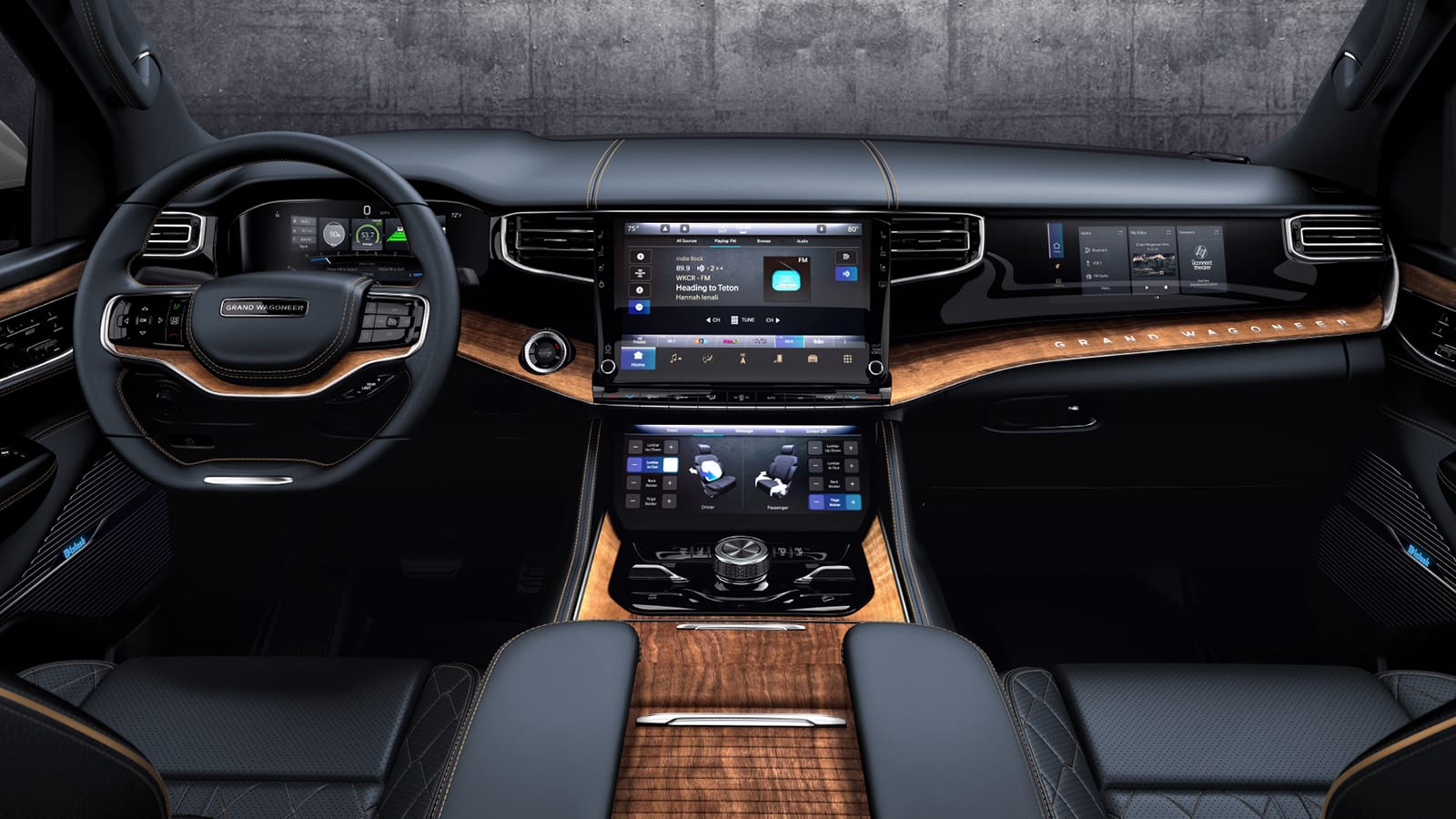
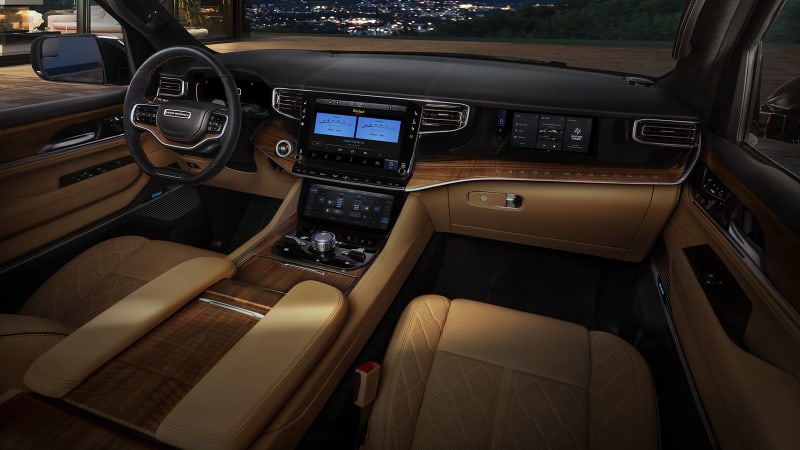
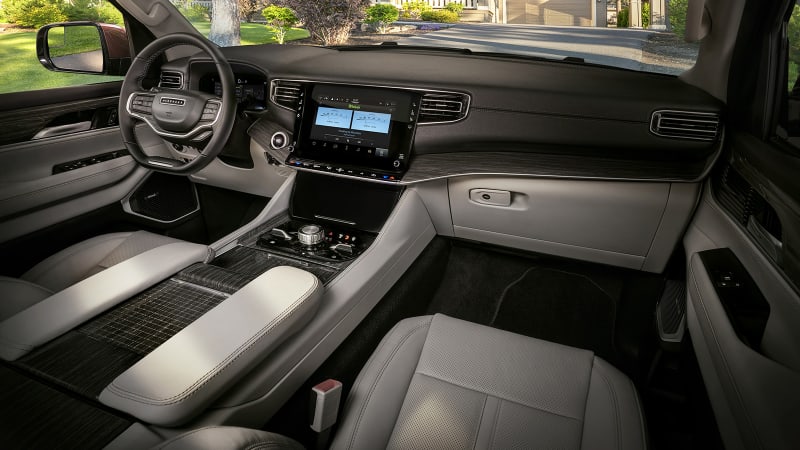
What are the Wagoneer interior and in-car technology like?
The Grand Wagoneer’s cabin is bound to get most of the attention with its lavish materials and staggering feature content. It may not offer the Escalade’s vast OLED touchscreen extravaganza or the Navigator Black Label’s sumptuous design, but it still manages to be just as impressively luxurious despite being from a brand that’s not technically a luxury one.
The cheaper Wagoneer is bound to find more homes, however, and in a way, it’s actually even more impressive. Pictured above right, it has the same cabin design as the Grand Wagoneer pictured above left – its materials just aren’t as ritzy, nor its feature content as staggering. Compared to a Tahoe or Expedition, however, which have completely different cabins than their Cadillac and Lincoln cousins, the Jeep has a clear advantage.
As for technology, it can certainly overwhelm given the sheer quantity available, but at least it’s mostly controlled by the latest, user-friendly Jeep Uconnect user interface. There’s the central infotainment display (10.1 inches in the Wagoneer and 12 inches in the Grand Wagoneer) and the standard digital instrument cluster (10.25 inches for the Wagoneer and 12.3 for the Grand). Some models also have touchscreens dedicated to the climate control system and seats in the front and in the rear. One can also spec a touchscreen for the front passenger and a rear-seat entertainment system with dual 10.1-inch screens. So, seven in total — and that’s not even counting the digital rear camera mirror or the head-up display.
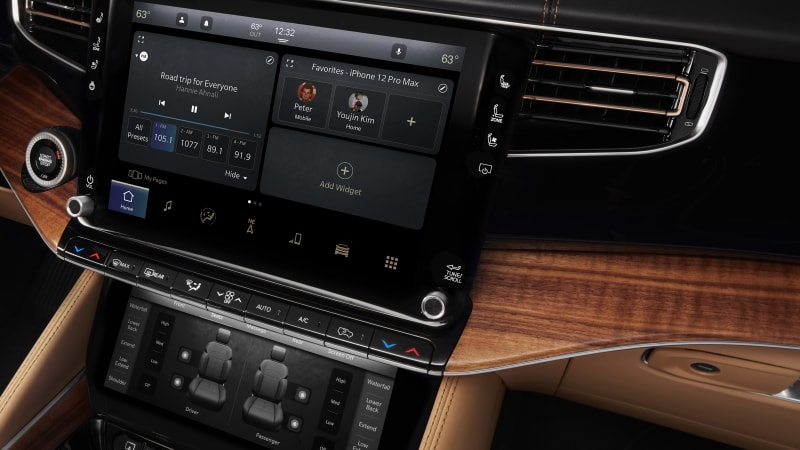
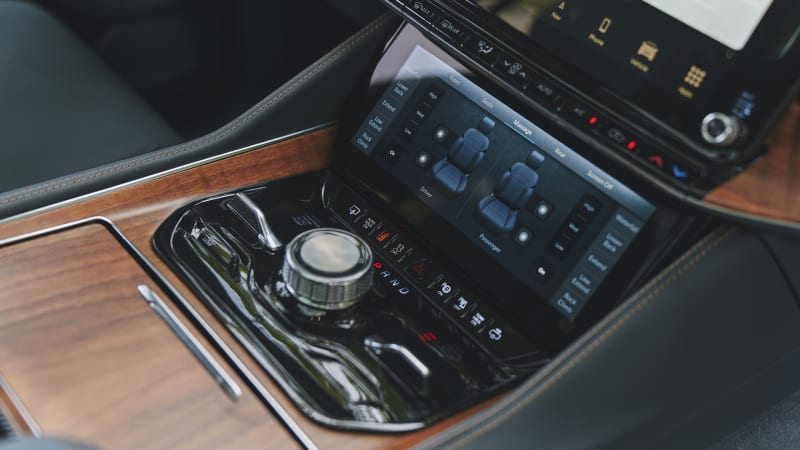

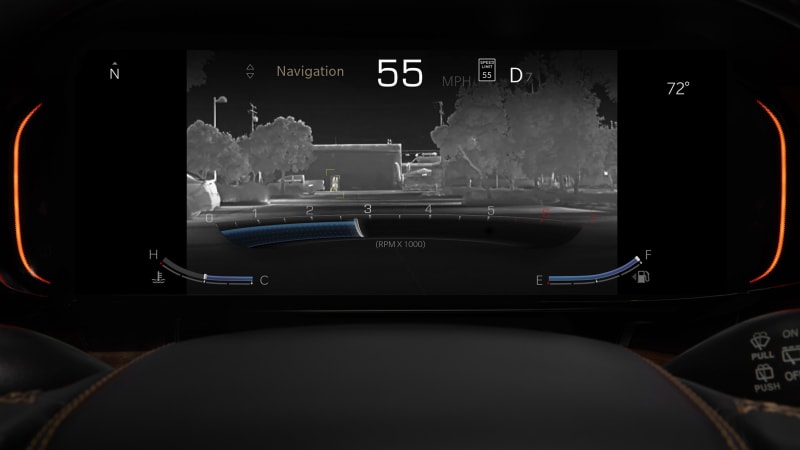
How big are the Wagoneer and Grand Wagoneer?
Both Wagoneers are actually the same size, which stretches 4 inches beyond the Tahoe/Yukon/Escalade and Expedition/Navigator. There is no Suburban-like extended version – at least not yet. This translates into appreciable benefits inside, especially in the third row. While both the GM and Ford full-sizers now offer genuinely comfortable space in the way back for even those taller than 6 feet, the big Jeep actually manages to surpass them slightly in terms of space. It also does a better job of extending the rest of the cabin’s luxurious feel into the third row. We doubt there’s a nicer third row out there.
The Wagoneer also enjoys a cargo advantage. That extra length grants it more space behind the raised third row than the Tahoe/Yukon/Escalade and Expedition/Navigator. Specifically, we could fit all six bags of our luggage test back there – we couldn’t manage that in the others. In terms of space with the third- or second-row down, we’re talking degrees of enormous here. Ditto second-row passenger space. Note than an eight-passenger, 2/3/3-oriented seating arrangement is standard on the Wagoneer and optional on the Grand Wagoneer. A seven-passenger, 2/2/3 arrangement is standard on the Grand and optional on the Wagoneer.
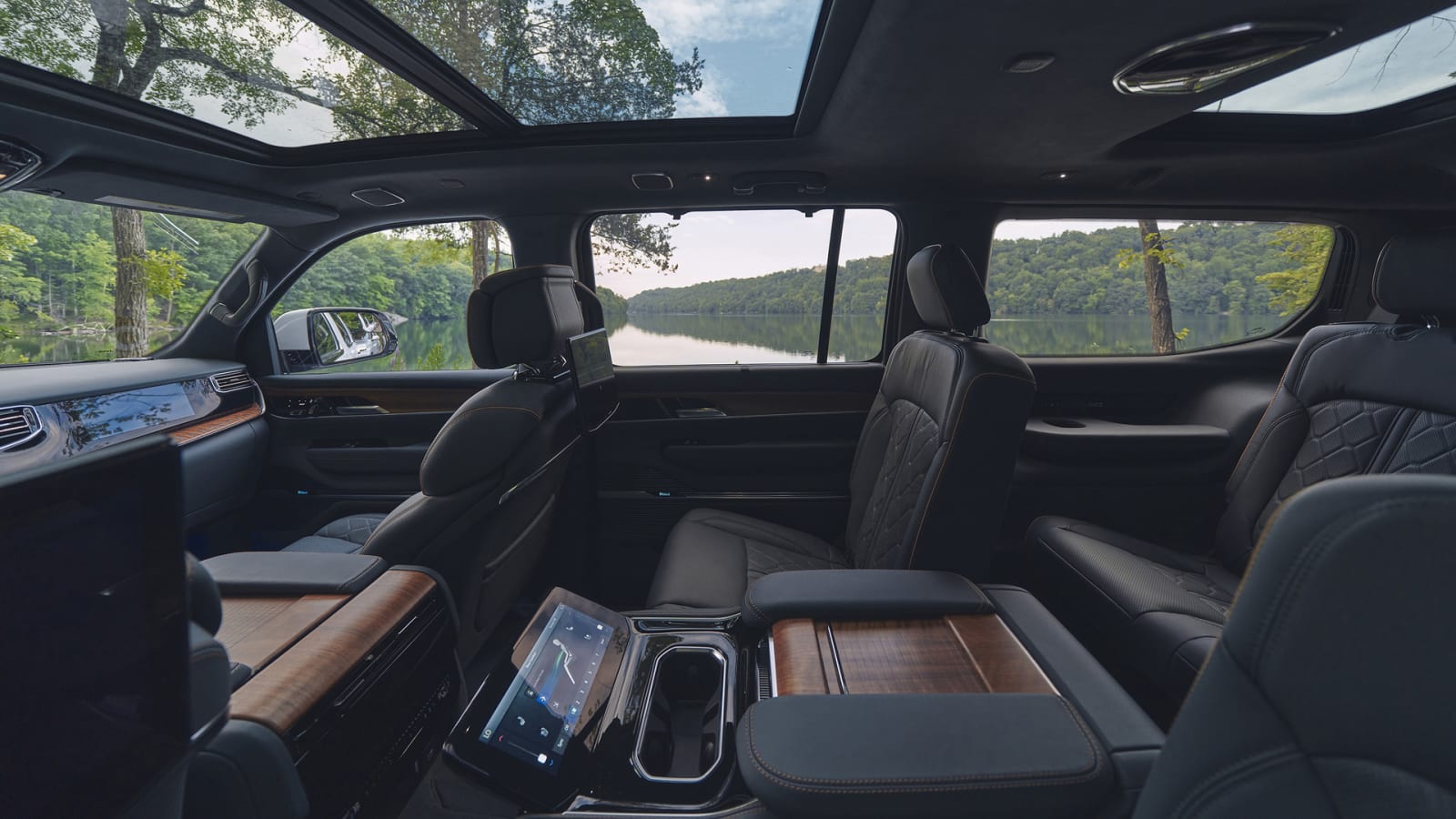
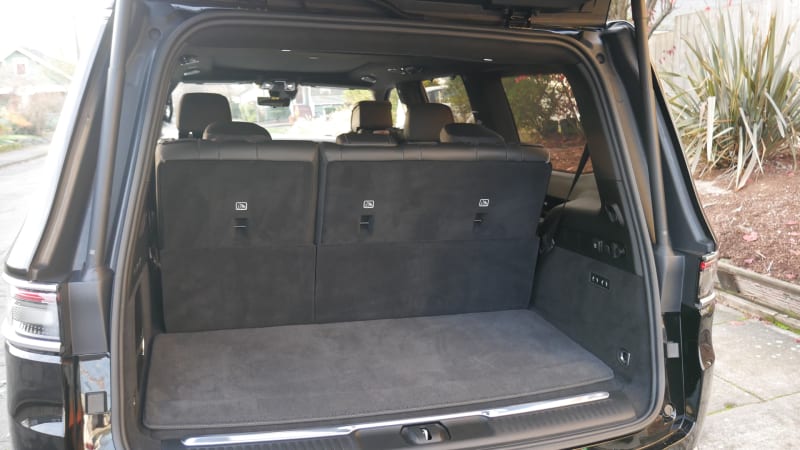
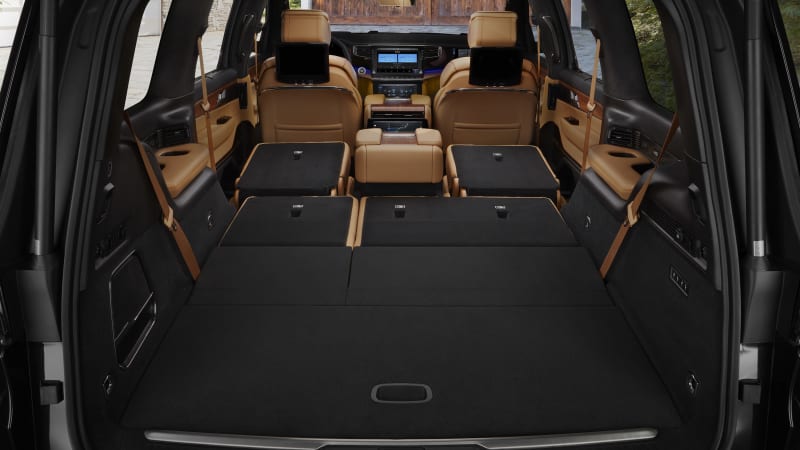
What are the Wagoneer fuel economy and performance specs?
The Wagoneer is powered by a 5.7-liter Hemi V8 with a mild-hybrid assist system and eight-speed automatic transmission. Rear-wheel drive is standard, and there’s an option of Quadra-Trac I four-wheel drive (a single-speed transfer case) and Quadra-Trac II (adds a selectable low-range). It produces 392 horsepower and 404 pound-feet of torque, which easily exceeds GM’s 5.3-liter V8 but essentially falls short of Ford’s turbo V6. It falls well short of both their respective fuel economy figures. With 4WD the Wagoneer returns 15 mpg city, 20 mpg highway and 17 mpg combined. That’s only a difference of 1 or 2 mpg combined versus the Tahoe/Yukon and Expedition, but it actually amounts to hundreds of dollars spent per year at the pump. The Tahoe/Yukon also offers an even more efficient diesel option.
Things get better and also much worse with the Grand Wagoneer. It has a 6.4-liter V8 paired with an eight-speed automatic and the Quadra-Drive II 4WD system that includes the low-range and an electronic limited-slip differential. Output is 471 hp and 455 lb-ft of torque, numbers that both exceed those of its competitors (horsepower) and trail them (torque). Fuel economy comparisons get even worse. The Grand Wagoneer returns 13 city, 19 highway and 15 combined. The difference between that and the 6.2-liter Escalade is negligible, but according to EPA yearly fuel estimates, you’d spend $1,100 less per year filling up a Navigator and $1,550 less filling up the diesel-powered Escalade or Yukon Denali.
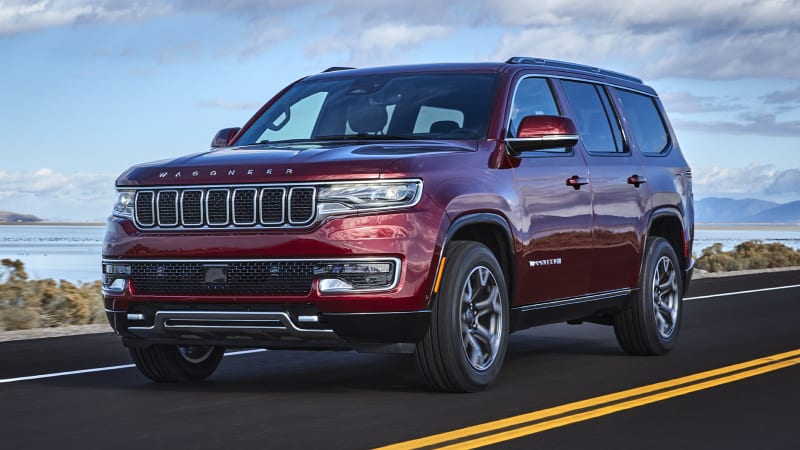

What’s the Grand Wagoneer like to drive?
This big Jeep moves down the road like a vast ocean liner, for better and for worse. You’re always aware of its huge proportions and gargantuan weight, while the air suspension that’s standard on the Grand and optional on Wagoneer allows a fair bit of lateral rocking while making turns. One of our drivers actually clonked his head against the B pillar while turning into a parking lot. That doesn’t happen in the more sure-footed Escalade. At the same time, an ocean liner is an awfully comfortable, quiet and luxurious way to travel. The ride is exceptional, and there’s a resolute sense of stability when cruising down the highway (pun not intended).
We have yet to drive the Wagoneer on road, but considering its power output and 6,000-pound curb weight, it seems like a fair bet that acceleration will likely only be on par with GM’s 5.3-liter V8. The Grand Wagoneer, on the other hand, provides a broad wave of effortless power cloaked in enough sound deadening to remove any trace of uncouth V8 roar. It’s a real treat … if you can afford the crushing fuel bill.
As for the experience off-road, the Wagoneer is not Trail Rated, so don’t expect it to venture to the same places a Grand Cherokee can. Its size and lack of axle articulation hold it back. It still offers as much as 10 inches of grand clearance and a low-range transfer case, though.
What other Jeep Wagoneer reviews can I read?
2022 Jeep Grand Wagoneer First Drive Review
Our first drive of the Grand Wagoneer (plus some time off-road in the Wagoneer), including more in-depth information about its design, engineering and options.
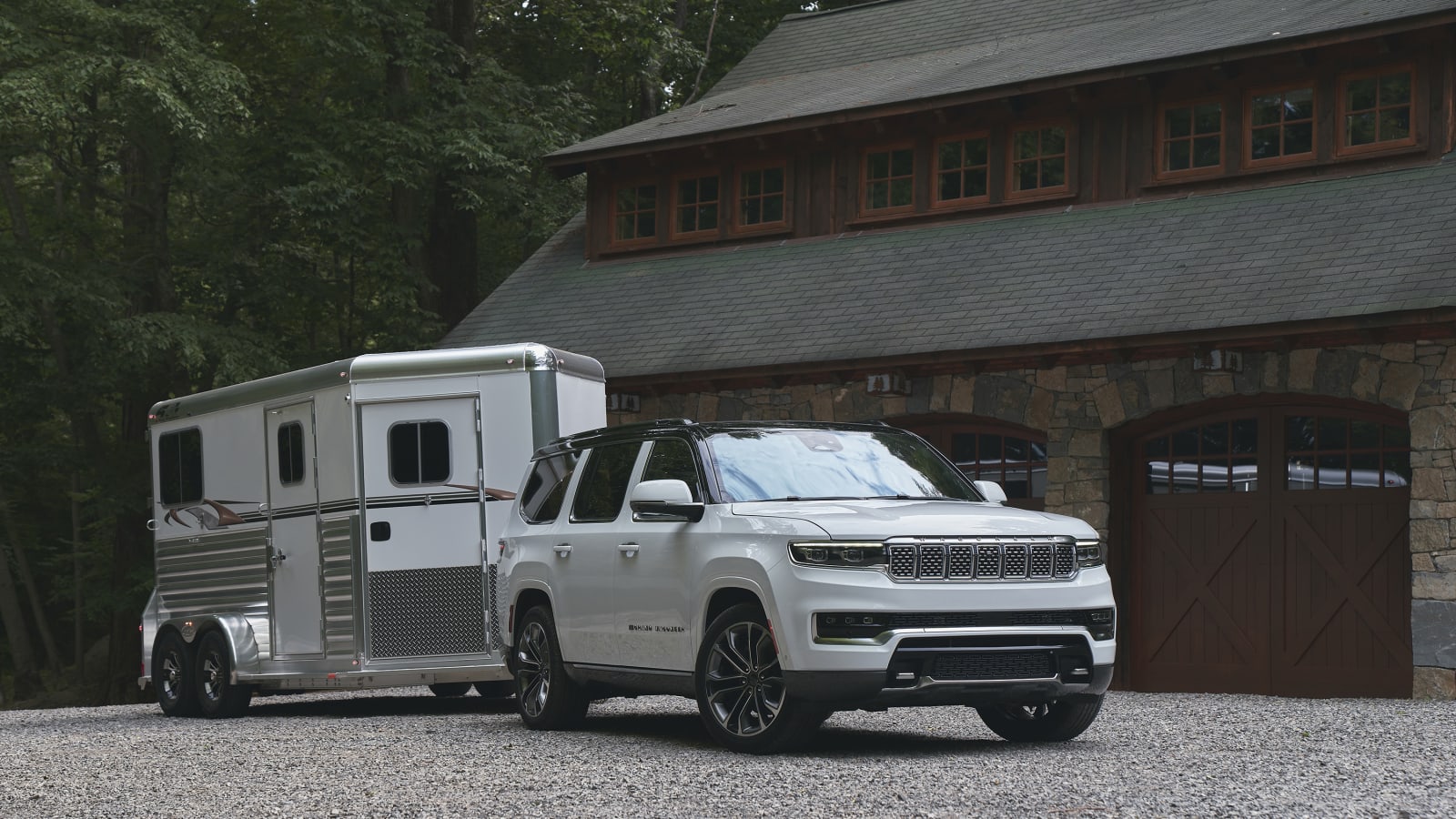
Jeep Grand Wagoneer Luggage Test | How much space behind 3rd row?
We take a closer look at how much stuff can fit behind the Wagoneer’s raised third row, and how that compares to the GM and Ford full-size SUVs. (Spoiler: it’s better)
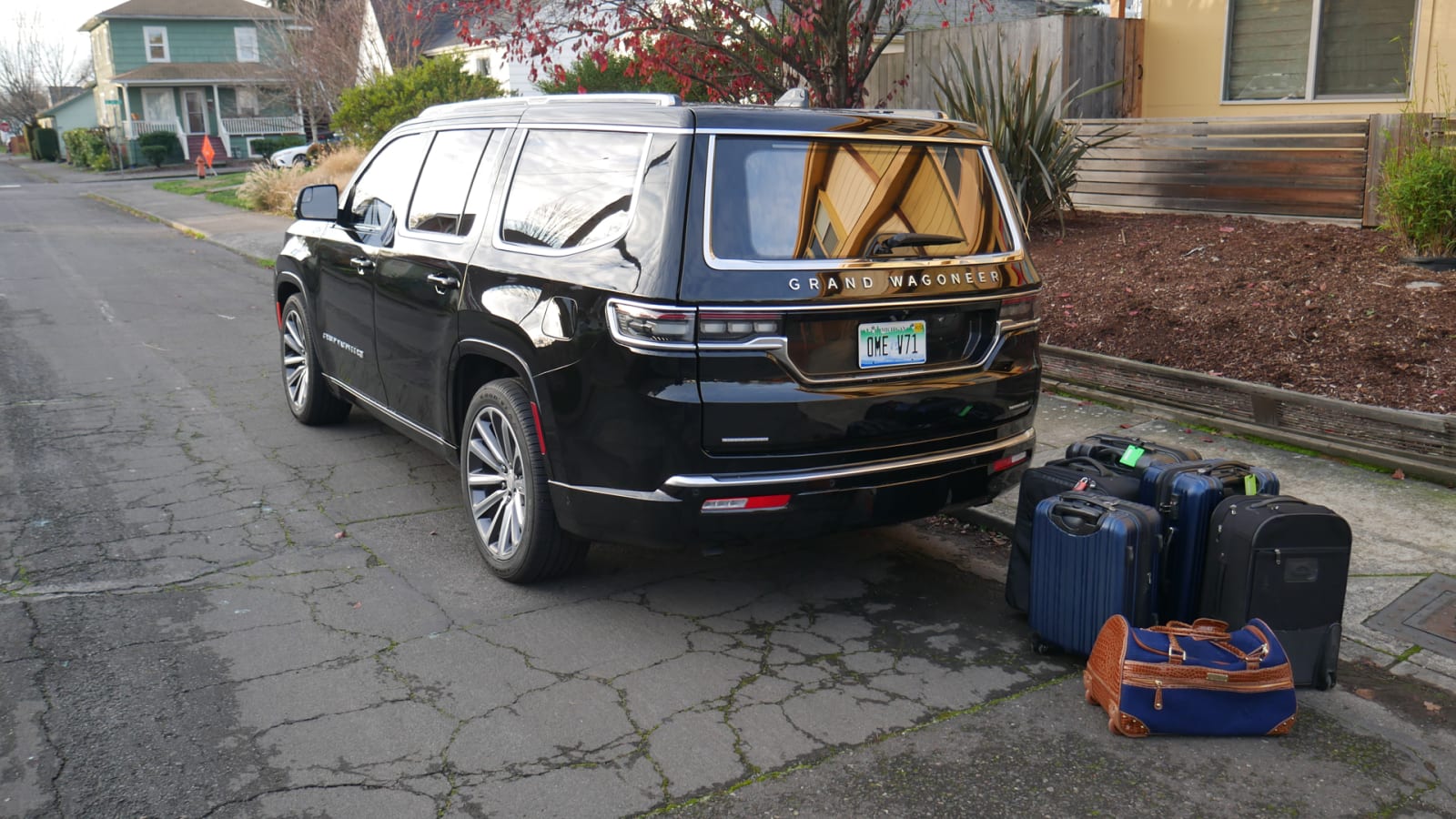
How much is the 2022 Wagoneer price and what features are available?
The Wagoneer is available in two trim levels: Series II and Series III. Not sure what happened to Series I, but let’s move on. The Grand Wagoneer does indeed get Series I plus Series II, Obsidian and Series III.
Rather than dive deeply into the feature content differences of all of the above (we’d be here all day, there’s so much equipment available), let’s focus on the differences between Wagoneer (below left) and Grand Wagoneer (below right). Besides their distinct engines, the Grand comes standard with the air suspension and Quadra-Drive II 4WD system that are otherwise optional on the regular Wagoneer. It adds tri-pane panoramic sunroofs, four-zone climate controls, bigger interior displays, upgraded leather upholstery, 24-way power front seats (versus 12), second-row captain’s chairs (optional Wagoneer), an automated parking system, and one of two McIntosh premium sound systems with either 19 or 23 speakers. It also gets a slightly different front fascia including a more ornate grille, exterior brightwork (minus the Obsidian), and a contrast black roof, while the interior gets an upgrade with richer wood trim and leather-wrapped interior surfaces.
All prices below include the absurd $2,000 destination charge. Adding 4WD to either Wagoneer is a $3,000 option. Yikes.
Wagoneer Series II: $71,440
Wagoneer Series III: $76,440
Grand Wagoneer Series I: $90,400
Grand Wagoneer Series II: $97,440
Grand Wagoneer Obsidian: $102,440
Grand Wagoneer Series III: $106,845
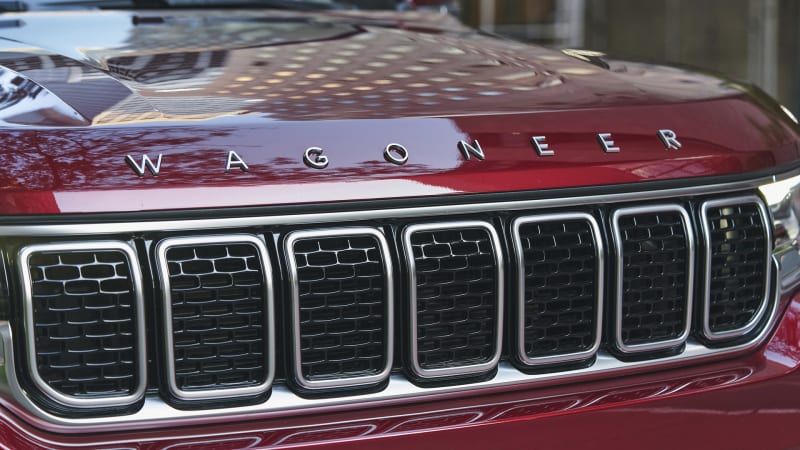
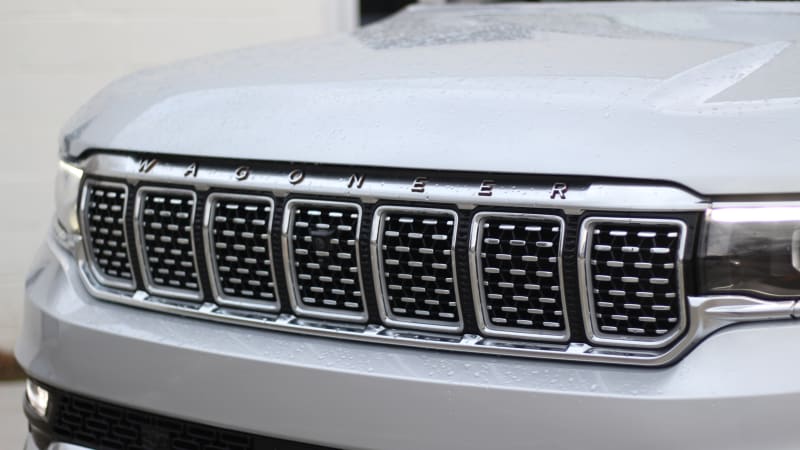
What are the Wagoneer safety ratings and driver assistance features?
Every 2022 Wagoneer comes standard with forward collision warning and automatic emergency braking, blind-sport and rear cross-traffic warning systems, lane keeping assist, adaptive cruise control, trailer sway control, and front and rear parking sensors. A 360-degree parking camera is standard on the Grand and optional on Wagoneer.
Neither NHTSA nor the Insurance Institute for Highway Safety had tested the Wagoneer at the time of this writing.

